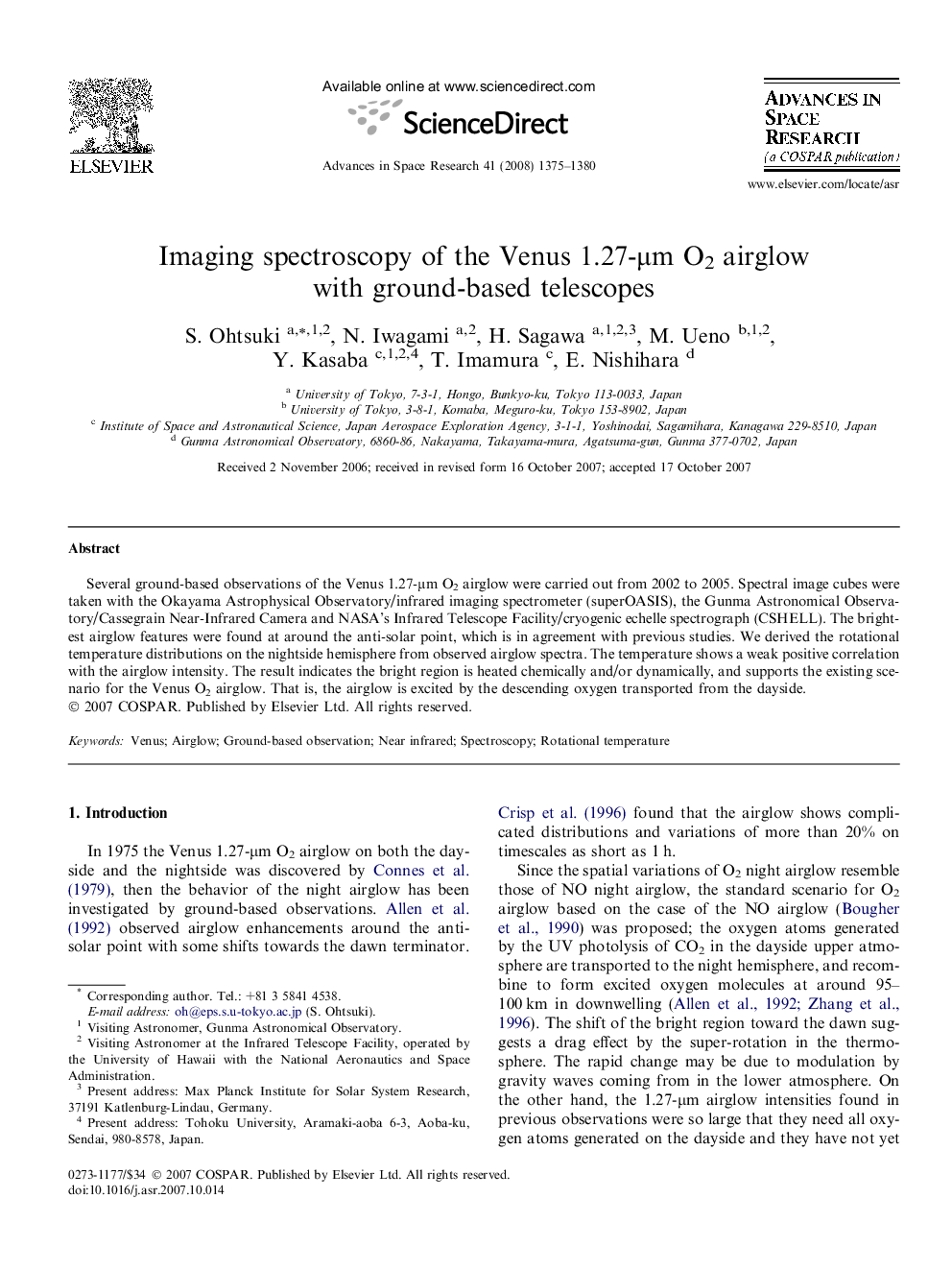| Article ID | Journal | Published Year | Pages | File Type |
|---|---|---|---|---|
| 1768171 | Advances in Space Research | 2008 | 6 Pages |
Several ground-based observations of the Venus 1.27-μm O2 airglow were carried out from 2002 to 2005. Spectral image cubes were taken with the Okayama Astrophysical Observatory/infrared imaging spectrometer (superOASIS), the Gunma Astronomical Observatory/Cassegrain Near-Infrared Camera and NASA’s Infrared Telescope Facility/cryogenic echelle spectrograph (CSHELL). The brightest airglow features were found at around the anti-solar point, which is in agreement with previous studies. We derived the rotational temperature distributions on the nightside hemisphere from observed airglow spectra. The temperature shows a weak positive correlation with the airglow intensity. The result indicates the bright region is heated chemically and/or dynamically, and supports the existing scenario for the Venus O2 airglow. That is, the airglow is excited by the descending oxygen transported from the dayside.
